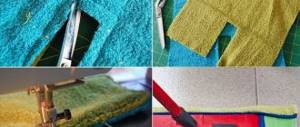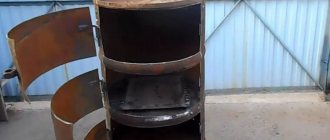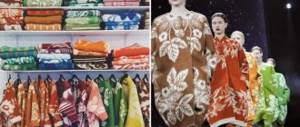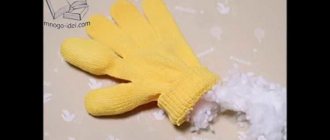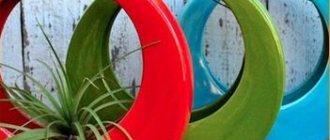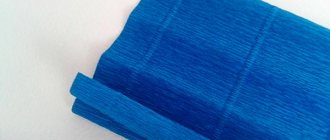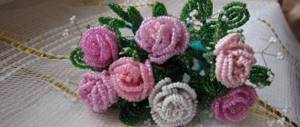Every year in Russia, about 70 million tons of solid household waste end up in landfills, of which 3 to 7% is textiles. It turns out that at least 2 million tons of clothing and other fabric products end up in landfills without being recycled.
Where can I donate my unwanted clothes?
You can give a second life to tired or out-of-size wardrobe items: exchange them for swap or donate them to charities. There they will be sorted: some will go to the homeless, some to low-income families, and some will replenish the assortment of charitable thrift stores, the proceeds of which go to help those in need.
- The Second Wind Foundation accepts unwanted clothing in several regions of Russia.
- There is a project called “Good Box” in Moscow.
- Items for charity are accepted by the “Collector” project of the “Separate Collection” movement.
- “Fair Aid” in Moscow accepts clothes and shoes according to the season (used or new, clean, in good working order).
- The Volunteers to Help Orphans Foundation in Moscow accepts children's items by agreement/
- There is a network of charity stores “Spasibo!” in St. Petersburg.
- The Lepta Foundation in St. Petersburg also accepts clothes for charity.
Container for collecting clothes from the Second Wind Foundation.
Photo courtesy of the foundation You should hand over items that are clean, free of defects, in good condition, or completely new. What can no longer be worn can be recycled.
What clothes should not be recycled?
As a rule, none of the non-profit organizations accepts underwear, swimsuits, socks and tights (with the exception of completely new, unworn items). This is dictated by epidemiological safety considerations, explains Second Wind technologist Ilya Huseynov. In addition, such products are small in size, have a heterogeneous and practically undetectable composition, which makes their processing impossible even theoretically.
Outerwear, fur and leather products cannot be recycled.
Items with a complex composition of several types of fibers most likely cannot be recycled. Although this is not written about in the instructions for handing over things, so as not to complicate communication. All textiles submitted for processing are additionally sorted, at which point clothes with a complex composition are rejected.
What are things processed into in Russia?
Now in Russia the only product of textile processing (both from natural fabrics and synthetics) is regenerated fiber of various qualities, says a technologist at Second Wind. That is, you can’t make a new one out of an old T-shirt. But this situation has developed not only in Russia: a small number of enterprises around the world are engaged in full-fledged textile processing (from item to item). This industry will still develop.
A small number of enterprises around the world are engaged in full processing of textiles (from item to item).
Regenerated fiber is a non-woven textile material that is produced when fabrics made from natural and mixed fibers are shredded and de-fibrated on looms. It is used to make insulating materials and furniture padding. Also, secondary (regenerated) fibers are used to produce yarn (when mixed with primary fibers).
Regenerated fiber under a microscope. Photo courtesy of the Second Wind Foundation
But in fact, making padding and insulation from old synthetics is more difficult than making fiber from plastic bottles - this is an easier material to process, explains Ilya Guseinov from Second Wind. Bottles are also used to make new clothes, such as fleece jackets.
Sometimes old clothes and textiles made from natural fabrics (cotton, linen) are not recycled, but simply cut into rags. Rags are used for wiping mechanisms in auto repair shops, printing, chemical industries, mechanical engineering and other industries.
Sign up for Greenpeace's free eco course and learn more about thrift shopping, discarding unwanted clothes and dressing sustainably.
SUBSCRIBE
Where can you recycle clothes?
"Collector", Moscow
The project accepts in Moscow single-layer clothing made from any natural fabrics and home textiles (bed linen, towels, rags, curtains, bedspreads). You can take your things to an eco-friendly place or call an eco-mobile. They will be used to make insulation at a plant in Ivanovo.
Warehouse of the Second Wind Foundation. Photo courtesy of the foundation
“Second Wind”, Moscow
The fund accepts clothing and clean home textiles from fabrics of any composition for recycling. Second Wind cooperates with enterprises in the Ivanovo, Kostroma, Nizhny Novgorod and Moscow regions. The sorting process is carried out manually, things are divided into several categories: for sale, charity, recycling, unsuitable for further use.
To produce cleaning rags, Second Wind specialists cut textiles into pieces, then package them and sell them to various enterprises. But the foundation donates most of the unwearable textiles to partner factories that produce regenerated fiber. It is suitable as insulation, sound insulation, and furniture padding.
Recycling clothes is unprofitable for the foundation; recycling one kilogram of clothes costs it 60 rubles. But “Second Wind” does this anyway to promote the idea of recycling in Russia.
The foundation recently launched the project “Handles from unwanted clothes.” The idea is to turn unwearable synthetic clothing into granules, which will then be used to make stationery pens.
The result of an experiment on recycling clothes into pens. Photo courtesy of the Second Wind Foundation
“Thank you!”, St. Petersburg
The chain of charity stores accepts clothing and textiles made from natural and blended fabrics for recycling. As project manager Natalya Galechyan explained, only 100 percent synthetics are not suitable, as well as heavy coats, jackets, and padding polyester products. Monthly “Thank you!” sends 15–20 tons of clothing for recycling. They go to two factories - in Ivanovo and Orekhovo-Zuevo near Moscow. Some of the rags are used as cleaning materials, and some are turned into fiber, which is used to stuff furniture and is used as heat and sound insulation.
These are the fiber bags you can find at Thank You!
House slippers made from regenerated fiber
Photos courtesy of the store "Thank you!"
Some old clothing and textiles are used to make regenerated fiber into slippers or bags. Mixed fabrics consisting of approximately 50% cotton are suitable for this. According to Natalya Galechyan, some designers are trying to sew new clothes from such recycled fiber.
"Lepta", St. Petersburg
The charitable foundation sends old clothes to two enterprises in St. Petersburg and Yekaterinburg. They produce cleaning rags, non-woven fabric, and technical wipes for cleaning. Things made of cotton and mixed fabrics are suitable for this. In the production of rags, outerwear, clothing made from synthetic, woolen and wool blend fabrics, children's and underwear, lined clothing and contaminated items are not used.
What clothes to buy to create less waste
- Buy clothes when you really need them .
- Choose high-quality items that will last you a long time, for example, clothes from local designers.
- Explore the assortment of second-hand stores , you can find great things there.
- Look at the composition . It is not so easy to recycle a boring item: it is desirable that it consists of one material. Decorative elements also complicate recycling: glitter, accessories, rhinestones.
This text was published thanks to the help of our supporters. Please support us so that we can continue to share useful information.
zero waste clothing eco habits
Watercolor drawing on a T-shirt
I imagine you were thinking, “I can’t paint with watercolors. Do you want me to watercolor a T-shirt?”
Don't worry my friends, today I will show you some simple steps on how to make a beautiful design on a t-shirt. The best part is that you can use any stencil and still add bright colors to it! The stencil can be printed on a printer or purchased ready-made.
Who's ready to start? This is a great fun creative activity.
I have excellent markers that can be used to draw on any material and after washing all the drawings are preserved. Children really like this activity. Let's start!
Tools and materials:
- Fabric markers;
- Cotton T-shirt (white is best);
- Glass of water;
- Napkins;
- Cardboard or plastic bag;
- Iron;
- Parchment;
- Stencils (I have feathers).
Step 1:
Tear off a sheet of parchment paper and place it inside the T-shirt, waxy side up.
Step 2:
If you printed stencils, now is the time to cut them out. I want to cut them along the outline so that later I can place them under the neckline.
Step 3:
Lay the stencils on top of the parchment paper from the inside out. Align the fabric on a horizontal surface.
Step 4:
Set the iron to low heat and iron the shirt over the stencils.
Step 5:
Carefully fold the napkin and place a glass of water on it. You can wipe your brush on it and the colored drops of water will not stain the table.
Step 6:
Take a black fabric marker and trace the feathers. If you need to achieve a more intense color, circle it several times. Here's what it might look like when you're done.
I like it this way already. If you want, you can stop there. If you want more, then follow me!
Our possibilities are endless! I think you already have a bunch of your own ideas in your head.
Step 7:
When we are done with the black, we leave it overnight. Or at least for a few hours.
Then I place a plastic bag inside the t-shirt to prevent the back of the t-shirt from getting dyed. Then a notebook or piece of cardboard on top of the bag to make it convenient to draw. It's time to get out our colored markers!
Step 8:
Take the brush and lower it into the water.
Step 9:
Using a brush, carefully apply water over the black outlines.
I like to let the water drip onto the fabric so that the ink smears in different directions. You can smear the paint a little with a brush.
Caution: Do not overdo adding water. Our goal is to wet the T-shirt so we can start adding different colors.
Step 10:
Now that your shirt is damp, you can paint over the wet spots.
The drawing will end up looking very much like watercolor. Don't worry when you draw and the ink seems to bleed. In a few minutes the transformation will occur.
I like to apply a little color and mix two colors together. Then the drawing looks natural. Look at those yellow colors!
Remember when I said you don't need to mix a lot of colors? This is because when you start applying different colors, the black will still bleed. And to avoid dirt, it is better to apply paint in small areas.
I love. And you?
I'm absolutely delighted! The result is a truly unique thing!
Interesting publications
You can't pick mushrooms, but you can collect garbage.
“Now we will go out with you along the boar trail to Lake Ladoga. Let me remind you: there are and even...
Violetta Ryabko 27/08/2020
Demand a limit on single-use plastic in your region
In order for the work done on plastic watching to provide maximum benefit, we suggest you contact regional...
Antonina Evteshina 27/08/2020
Ah, eco-wedding!
Where is Greenpeace looking? · Ah, eco-wedding! Listen to us on Yandex.Music, Apple podcasts, Google podcasts, Soundcloud and Castbox. Celebrate…
Irina Skipor Anna Kosnikovskaya Violetta Ryabko 08/24/2020
Alena and the colonels
24-year-old Alena’s whole week is scheduled by the hour. On Tuesday - an environmental inspection of the territory of the military...
Irina Skipor 20/08/2020
How to organize a separate collection at the university?
All over Russia, students assemble teams, establish connections with university administrations, win grants - everything...
Tamara Kuzminova 19/08/2020
Stylish shirt with a pattern
Inspired by famous designers, we wanted to create a fun design with childish designs on a white cotton shirt. We draw a fancy print with light lines, imagining ourselves as a child.
I love fabric markers! You can use them in different occasions - clothes, shoes, bags and accessories - and always get an exclusive item!
Let's start!
Tools and materials:
- Fabric markers;
- White cotton shirt;
- A simple pencil.
I only used fine markers for the entire shirt and I used them to draw the entire design.
Step 1:
Lay out the shirt and draw your design with a pencil.
Step 2:
Using contour markers, we trace our pencil lines.
Step 3:
Using thick felt-tip pens, sketch out the figures and other areas of the drawing.
By filling the drawing with color, you can create versatile shading, imitating a child's drawing.
What will you draw on your shirt? Let us know in the comments!
T-shirt decor ideas
There are many interesting ways to decorate a T-shirt with your own hands. You can either pick up ideas on the pages of glossy magazines or on the Internet, or come up with them yourself. First you need to decide on the clothes that will need to be altered. So, for cutting with scissors, a cotton T-shirt or T-shirt is more suitable, because it will not stretch, fray, and will not lose its shape, unlike stretch models. You will also have to practice to get the perfect result, because what is planned does not always work out the first time. Then you need to decide on the decoration method, prepare the decor and you can start working.
This cute T-shirt can be made from a regular T-shirt and lace ribbon
One option is to decorate the back of an old T-shirt or tank top. After all, in summer an open back looks very sexy and stylish. Gentle romantic girls can make a T-shirt with a huge heart-shaped cutout on the back. To work you will need sharp scissors, chalk, adhesive fabric tape and regular silk tape. First, the T-shirt itself, which has a loose fit, is selected and carefully laid out on the table.
Interesting and stylish idea with a zipper
Next, take a sheet of A3 format and depict a neat oval heart of the required size on it. But to get a proportional heart, you need to fold the paper in half, draw one half so that the middle of the heart is on the fold line. After this, the sheet is opened and the heart is cut out. The pattern is applied to the T-shirt, its middle is determined, and a stencil is outlined with chalk. Then the heart is carefully cut out with scissors along the outlined contours. The contour of the heart is laid with adhesive fabric tape and ironed. In this case, the glue transfers to the fabric and the tape is removed. Now a silk ribbon is laid over the resulting layer of glue. Due to the glue along the contours, it is simply glued, the ends of the tape are bent inward. If there is no such adhesive tape, then it is enough to simply sew the tape on a machine or by hand - with a hidden seam. This neckline can also be made in the form of skeletons, and the T-shirt can be decorated with lace, an old zipper, paint, buttons, or twists of twine. There are a huge number of such methods. It's just a matter of taste, imagination and diligence of handmade craftswomen.
A ruffled “cuff” that you can design yourself will add charm to any outfit
T-shirt kimono
A kimono is a lighter version of a cardigan. It can be worn in summer or warm autumn. It's nice to throw a light cape over your shoulders on a cool evening. We made it from a XXXL T-shirt (Russian 56-60) without any sewing!
How to decorate a T-shirt with your own hands
Summer is exactly the time when you want to endlessly renew yourself, changing your wardrobe in every possible way. But for this it is not at all necessary to wander around fashion stores all the time and leave all your fortune there. It’s enough to set aside a little time, prepare an old T-shirt and use your imagination. Such a modest set will allow you to shine in new outfits every day. Perhaps this will be the first step towards creating your own fashion line, and your design ideas will not go unnoticed, becoming very popular. And to get started, you can consider the ideas of “experienced” stylists for decorating T-shirts with your own hands.
Try making a beautiful weave on a T-shirt
Perhaps someone is intimidated by the prospect of picking up a needle and thread. Indeed, many women simply hate sewing. But you don't have to pick up a needle to turn a stretched-out T-shirt into a fashionable tank top. It’s enough just to use scissors to trim off all the excess on the T-shirt: the neck, sleeves, part of the neckline - both front and back. It should be a full-fledged T-shirt. Next, all that remains is to decorate the chest with any sticker you like - transfer it using an iron, and fasten the straps with decorative braid, first wrapping them around the back in a tight cord.
Very beautiful and original
Cut out the silhouette...
...attach lace with thermal tape from the inside...
...and glue with a hot iron
You can decorate another one with flounces and lace cut from one T-shirt. To do this, cut strips from a T-shirt are decorated with lace along one edge, and sewn to the base T-shirt on the other. First, the flounces are attached from above, starting from the neck, and then the decoration continues downwards. Moreover, the upper balls are wider, and downwards they become smaller. The result is a kind of picturesque frill. This option is suitable for romantic girls.
You can sew a kind of corset lacing on the back
Beads, stones, buttons...
And of course lace
From T-shirt to T-shirt; lace included
